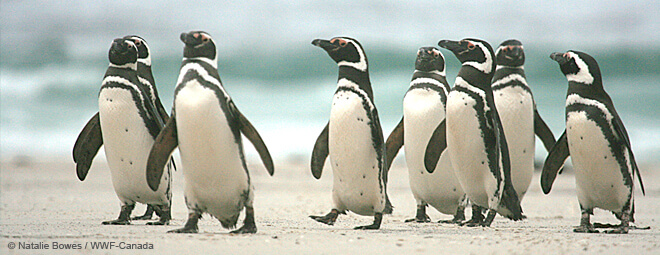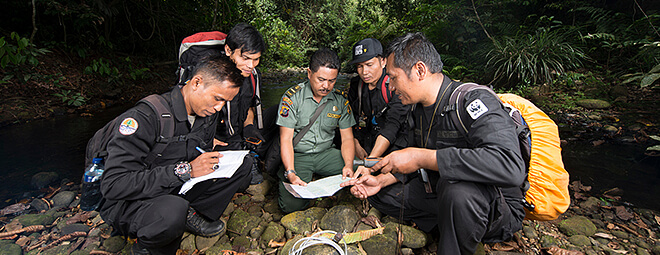1. Review of Climate Change Initiatives
Tokyo 2020 will be the first Olympic and Paralympic Games to set the target of zero carbon, or “decarbonisation”, symbolic and appropriate for the year of the beginning of the Paris Agreement.
With decarbonisation as its goal, the idea being adopted for Tokyo 2020 Games is to operate the event using 100% renewable energy, to implement as many energy saving measures as possible, and to offset the remaining CO2 emissions. Furthermore, acknowledging that Japan is an urban mine, promotion of recycling is clearly stated as one of the initiatives. The measures are appropriate for an international sporting event being held in the Paris Agreement era.
The sourcing policy for renewable energy is not comprehensive, reflecting the still young state of renewable energy development in Japan, but it could become a good policy model in the future for measures to combat climate crisis for local governments and companies. We hope it will become a legacy that promotes decarbonisation of Japanese society.
source: TOKYO 2020 Climate change
https://tokyo2020.org/en/games/sustainability/climate
Targeting for Zero Carbon in 2020 as the Paris Agreement Begins
The stated objective of Tokyo 2020’s ‘Towards Zero Carbon’ (decarbonisation) is “to manage the Games focusing on maximum energy savings and use of renewable energy, and thereby to build together the foundation for a decarbonised society, ahead of the rest of the world.”
To that end, first the amount of greenhouse gases to be emitted by the Games was estimated. Then measures are being implemented to limit CO2 emissions such as using already existing venues, to save energy at both existing and new venues, and to use renewable energy wherever feasible. Any remaining emissions will be offset.
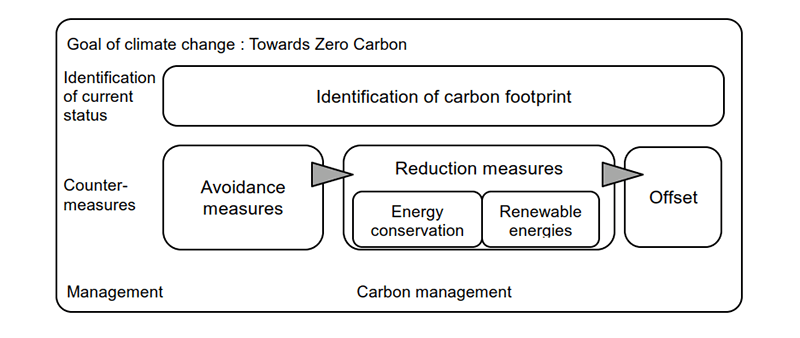
Source: Tokyo 2020 Olympic and Paralympic Games Sustainablity Plan Version 2
https://gtimg.tokyo2020.org/image/upload/production/jyt3ocxciw8shkus9vqd.pdf
This approach of first setting the science-based and top-down goal of decarbonisation, then implementing reduction measures and offsetting the remaining amount is a fundamental approach to combatting climate change. This is an appropriate policy not only on the national level but also as a good model for companies and local governments for climate change policies going forward.
Operating the Games with 100% Renewable Energy
Tokyo 2020 aims to operate on 100% renewable energy, with renewable energy being defined as follows.
- Renewable electricity with a clear and sustainable power source
- Electricity considered as renewable energy by environmental value
Based on this, renewable energy procured by the Tokyo 2020 Games focuses on the concepts below and as much as possible give priority to those that satisfy both (A) and (B).
(A) Prioritize renewable power sources such as solar, wind, geothermal, biomass, and hydropower.
(B) Regarding environmental value, prioritize those with traceability.
Source: The Tokyo Organising Committee of the Olympic and Paralympic Games (2019) "Sustainability Progress Report"
These ideas were adopted to achieve 100% renewable energy in the context that Japan is still in its early stages of renewable energy implementation, with the current renewable energy adoption ratio at about 16% (as of FY2017). Because the term “renewable energy” can be defined in many ways, the above definitions were agreed for policymaking purposes for the Tokyo 2020 Games at the Decarbonisation Working Group which deals with sustainability related issues.
WWF believes that the most important legacy of the Tokyo 2020 Games will be for the Games to be the lasting driving force for the spread of renewable energy. From that perspective, WWF is focusing on the following two initiatives.
One is to support the movement to disclose the source of the renewable energy, and the other is to support existing venues to replace currently contracted electricity with lower-emitting electricity with a higher renewable energy ratio.
The Tokyo 2020 Games use temporary venues and permanent venues. Regarding the electricity supplied to temporary venues and the extra electricity (increased amount) required for the operation of the Games at permanent venues, only renewable electricity with a clear power source will be used, and the breakdown of the power sources will be published.
In the discussion of renewable energy, knowing the type and source of the energy is crucial in considering its sustainability. Therefore, the policy for source disclosure will give a strong incentive to the power producers to clearly indicate the source of the power.
In addition to the extra electricity required for the operation of the Games, permanent venues have existing contracts with electricity providers for regular operations. It is being recommended for venues to select power companies that supply electricity with high renewable energy ratio and low CO2 emission factor for their regular operations as well.
This will provide power companies with an incentive to supply electricity with higher renewable energy ratio and lower CO2 emission factors. It is hoped that the Tokyo 2020 Games will provide the impetus to raise the market value of power companies supplying a high ratio of renewable energy and that they will become the preferred choice of consumers and businesses going forward.
However, with Japan’s renewable energy market not being mature enough, a specific renewable energy implementation ratio and quantitative targets for CO2 emission factor were not set. WWF finds it regretful that these were not included as stronger incentives.
Offset Conditions Applied in the Tokyo 2020 Olympics and Paralympics
Decarbonisation in the Paris Agreement is to reduce the emission of greenhouse gases to virtually zero. This means reducing emissions as much as possible, then offsetting the remaining amount through measures such as CO2 absorption by forests.
Because there are practical limitations to energy saving measures and adoption of renewable energy, much of the emissions from the Tokyo 2020 Games will be offset by using emission credits.
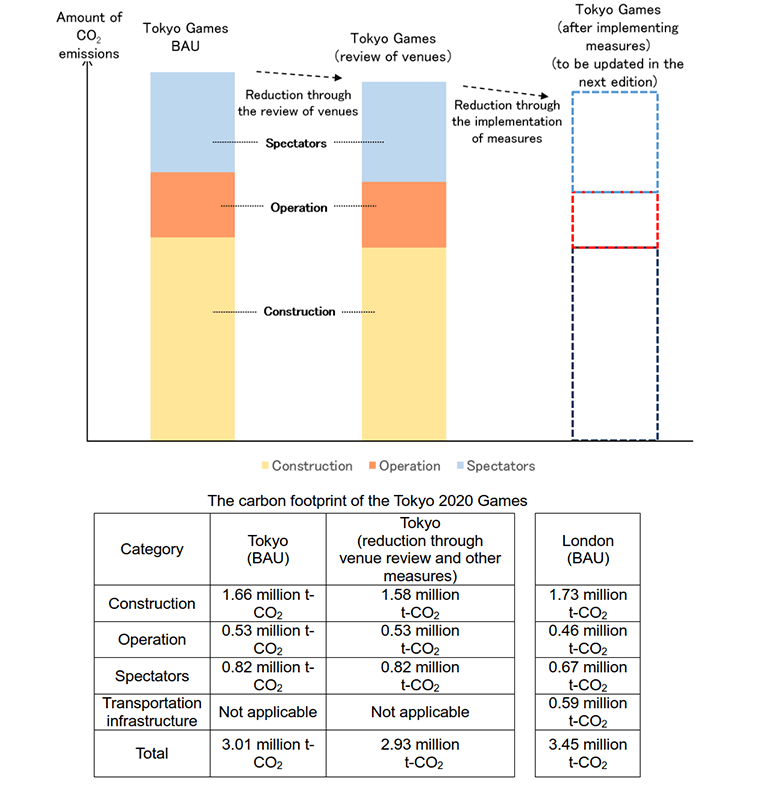
Source: Tokyo 2020 Olympic and Paralympic Games Sustainablity Plan Version 2
https://gtimg.tokyo2020.org/image/upload/production/jyt3ocxciw8shkus9vqd.pdf
For effective offsetting, the key factor is determining what really counts as a reduction in the emission of greenhouse gases, i.e., what emission credits to use. If the rules are lax, actual reduction in emissions may not occur.
For example, if a company claims that it purchased an energy-saving device and the resulting emissions reduction will be used for offset in the Tokyo 2020 Games, yet also claims the same amount for emissions reduction by the company itself, then emission credits are being double counted, thus not actually offsetting the increase caused by the Games.
In other words, the definition of offset credits that can be used will determine the effectiveness of decarbonisation at the Tokyo 2020 Games.
As a result of discussions by the Decarbonisation Working Group, the following four conditions were adopted as offset conditions at the Tokyo 2020 Olympics and Paralympics.
Conditions for Carbon Offset Credit at the Tokyo 2020 Games
- The project requires additionality.
- Double counting of carbon credits must be avoided. Transactions shall be recorded, and an independent system (directories and/or transaction logs) that enables an objective verification is necessary.
- The project must be validated and verified by an independent audit agency.
- The project must not have a negative effect on the society, the economy and the environment in which it takes place and preferably bring benefits. Specifically, it should be able to explain its contribution to the SDGs.
An example that satisfies the above conditions
- Municipal Cap & Trade Credits
- GS: Gold Standard (VER: Verified Emission Reduction) Use credits applied for invalidation by September 30, 2020
These offset conditions satisfy global standards and are suitable for the Paris Agreement era.
Examples of credit that satisfy these conditions include credit for the cap and trade system in Tokyo and Saitama Prefecture as well as Gold Standard certified credit.
These offset conditions shall be used as a model for not only future sporting and other events but also for the national government, local governments and companies.
CO₂ Reduction and Absorption Activities by Citizens at the Tokyo 2020 Games
One of the aims of the Tokyo 2020 Olympics and Paralympics is to encourage the general public to engage in CO2 reduction/absorption activities, making CO2 emissions reduction efforts to be a legacy of the Tokyo 2020 Games.
In order to encourage as many people as possible to contribute to creating a decarbonised society, activities by the general public for CO2 reduction and absorption will be recorded and published.
These initiatives include replacing lightbulbs with energy-saving appliances such as LED lighting, switching from cars to public transportation, and ensuring local municipalities to manage forests.
Reductions and absorptions resulting from these initiatives will be quantified using a specified formula and published.
Projects allowing for easy civil participation have already been announced by the city of Yokohama, Kumamoto Prefecture, Shinjuku (Tokyo) and other regions that are aiming to achieve zero greenhouse gas in 2050.
For details, see “CO₂ Reduction and Absorption Activities by the Citizens at the Tokyo 2020 Games” and join us!
The outstanding benefit of the CO₂ reduction and absorption activities by the citizens is that these activities are separate from the official carbon offset efforts of the Tokyo 2020 Games.
The so-called “offset” is a topic that has long been discussed and debated since 1990 in the UN negotiations, in the efforts to define emission credits that truly lead to emissions reductions.
Offsetting means that emissions from one source are cancelled out by reductions elsewhere. If reduction measures are not creating true reductions in emissions, then the system would in fact be allowing for increased emissions. For this reason, credits that can be used for offset have strict conditions specified through international deliberations.
Carbon offset at the Tokyo 2020 Olympics will be done in accordance with these strict conditions, thus civil activities will not be counted as part of it. The reductions created by civil activities are to be counted separately as additional reductions.
With these clear arrangements, the offset initiatives of the Tokyo 2020 Games are being internationally recognised.
It is hoped that this carbon offset method will become a legacy to be followed in future events as well as in offset efforts by local governments and companies.
Promotion of Iron Recycling for Greatly Reducing CO2 Emissions
Of the approximately 1.2 billion tonnes of CO2 emissions in Japan, emissions from processing in the steel industry account for about 14% (FY2016). Reducing CO2 emissions from such industrial processing is crucial for combatting climate crisis.
At the same time, the highly urbanised country of Japan is sitting on a wealth of “urban mines”. Through the “Tokyo 2020 Medal Project: Towards an Innovative Future for All”, the Tokyo 2020 Games collected used mobile phones, personal computers, and digital cameras to produce medals from recycled household metal.
Every year, a large amount of iron scrap is generated from demolished buildings and other urban waste. By recycling such iron scrap to produce steel, CO2 emissions can be reduced by as much as three-quarters per ton of iron.
*There are multiple LCA methods for iron, such as one that focuses on the environmental impact of manufacturing, and another that takes into account the recycling characteristics of iron. The ISO14040 series does not exclude the existence of multiple LCA methods in the same product if they comply with the standards.
The production ratio of recycled steel has reached nearly 70% in the US, and in Europe it is around 40%. In Japan, the ratio remains low at about 25%. If this ratio can be raised to the same level as Europe or higher, it will be possible to significantly reduce CO2 emissions in the Japanese steel industry.
For this reason, “recycled steel such as electric furnace steel” is set as one of the main indicators of measures against climate crisis in the Tokyo 2020 Games.
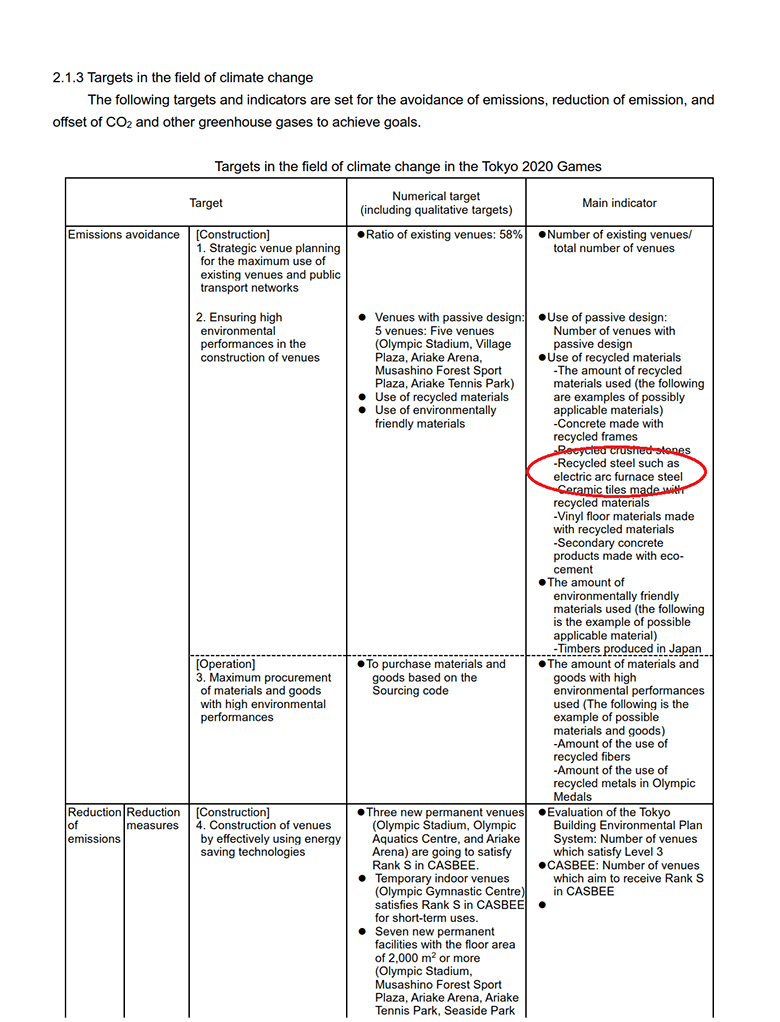
Source: Tokyo 2020 Olympic and Paralympic Games Sustainablity Plan Version 2
https://gtimg.tokyo2020.org/image/upload/production/jyt3ocxciw8shkus9vqd.pdf
It is not an overstatement to say that the promotion of iron recycling is indispensable for the aim of decarbonisation in the Paris Agreement. The hope is for the policy of the Tokyo 2020 Games to become a legacy for all of Japan.
Legacy of the Tokyo 2020 Olympics and Paralympics
The decarbonisation efforts of the Tokyo 2020 Games include many policies that will serve as a model for Japan's future initiatives to combat climate crisis.
Renewable energy initiatives could be improved, but they still contain advanced initiatives such as effective CO2 reduction measures as shown below.
- Top-down method of goal setting
- Employment of method to eliminate and reduce emissions, substitute with renewable energy, then offset
- Identification of the source of renewable energy and promotion of electricity with low emission factors
- Offsets based on strict criteria
- Promotion of iron recycling
Overall, decarbonisation initiatives of the Tokyo 2020 Games are appropriate to become a legacy to be followed by governments and companies.
Reference
Tokyo 2020 Olympic and Paralympic Games Sustainability Plan
https://tokyo2020.org/en/games/sustainability/sus-plan
Tokyo 2020 Sustainablity
https://tokyo2020.org/en/games/sustainability/



